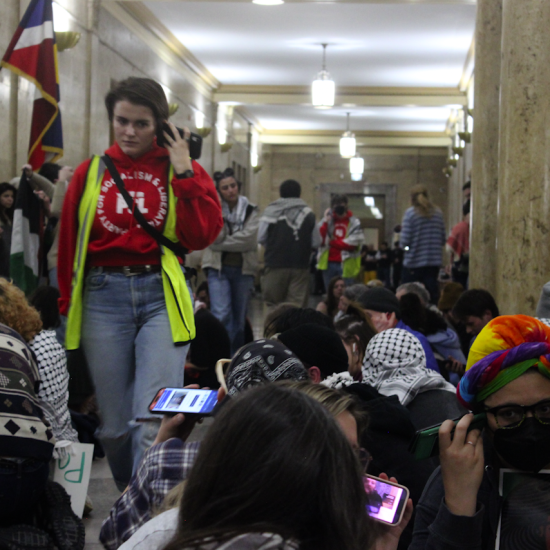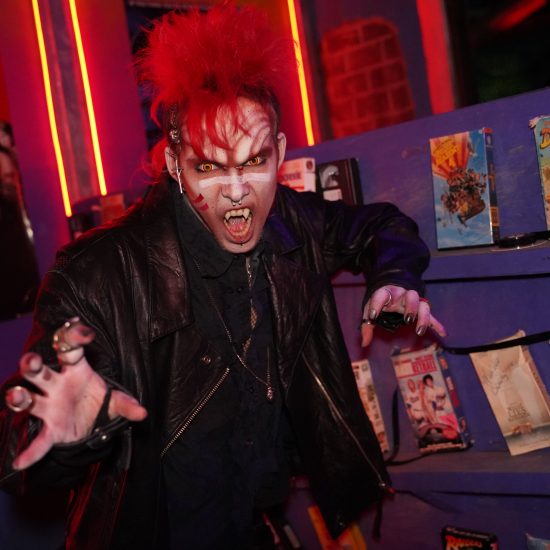
What is your Dia de los Muertos tradition and why is this celebration important to you?
In my family, we have been celebrating Día de los Muertos for decades. I probably first started celebrating it in my early 20s. My husband and I tragically lost the best man in our wedding when we were 26 and we have been making an ofrenda for him since that time. As more people have passed in our lives, we always add them to our ofrenda. After my father passed away, my siblings and I began an ofrenda for him. A lot of times when you lose someone, someone dies, it’s so permanent. It’s such a big gap in your life and such a huge loss that this way you can go through the memories that you had of the person, you can talk about them, you can bring out special items of theirs and it can help with the grieving process; not think that it’s so permanent but to think that your members are just right there on the other side of the veil and coming to visit you.

What is your ofrenda like and how do you honor lost loved ones?
We usually take things that were super special to them. Our father loved bubble gum. He loved green chili, red chili, and homemade beans. So, we always set up food for them—their favorite foods. We put out their favorite drinks, put out pictures of them, we put out anything—their favorite books or anything that they held near and dear to them. I think it’s just something where you follow your heart. I don’t replicate them the same every year, I add different things and it’s all just guided by the feelings that I have. I think it changes the way that you can grieve for somebody instead of thinking somebody is gone forever. The veil between life and death gradually gets thinner during this time and our loved ones can come visit us. My friend—who’s been gone for almost 20 years of my life—around this time I can pull out pictures and relive the memories I have of him, think about his favorite foods, think about stories, and honor him in a different way than just going to a cemetery.
What are other components of the celebration and what do they represent?
For people who are making the journey through the veil, it’s said that they’re thirsty, so you put out water. You put food so that they can have some of their favorite food. You put the marigolds, which represent color, they represent life. You put monarch butterflies. The monarchs travel from Canada, and they make their way down to Mexico. I spent Dia de los Muertos in Pátzcuaro, Mexico one year and they were flying everywhere. They represent your ancestors coming back to visit you on their wings. So, I always put marigolds, we put salt, we put water and I’ve bought the monarch butterflies that we always add to the altars. My family and I put sage because it’s cleansing, and it cleanses out the spirits. There are elements to each ofrenda that are consistent, each element usually has a meaning rooted within a family tradition or the tradition of always having the marigolds on the ofrendas in the altars.

Why is it important to bring people together to celebrate the day in La Raza Park?
They’ve been having this celebration in La Raza Park forever. Nita Gonzales and the Gonzales family have been hosting Dia de los Muertos at La Raza Park since the ‘80s. They would march down 38th Avenue, make a left on Tejon, right on 32nd, end at the Escuela Tlatelolco and they would feed everyone. I have been part of that tradition forever; our family owns Tamales by La Casita, and they would always march down in front of La Casita. It stopped during COVID, and we brought it back without the parade and the dancers starting at one place and ending at the other. Nita came up with the idea of having the opportunity to use El Kiosko structure at La Raza Park and the community bringing and setting up their own ofrendas. Having it more like a little festival like you would see in Mexico City. It’s about celebrating life and bringing the community together.

What would you like people to take away from the celebration?
My hope is for people who haven’t heard about it, that they have an opportunity to have exposure to a different type of culture. For me and my family, it’s a way to keep traditions alive. As Northwest Denver has experienced more gentrification and displacement, reminding people that we were here and we have these traditions that are very important to us. I would say the next thing that’s really important is just having the ability to continue to honor our loved ones and having that grieving process. There are five cycles of grief and when you’ve lost a dear one you never get over it. You don’t just wake up and you’re like, ‘Ok I’ve done this.’ You’re in different realms of the five cycles of grief. For me, this has helped with the loss of my father. I worked with him at La Casita for a long time and he was a huge presence in my life. It’s a time for me to honor him, my friend Jason, my aunts and uncles who have passed, and other dear friends. We attempt to mourn in a different way instead of being sad. In the American tradition, it’s very sad and you don’t talk about it. In this tradition, you talk about your loved ones, bringing them to the forefront of that day. It’s just a very different experience and it’s really helpful.






